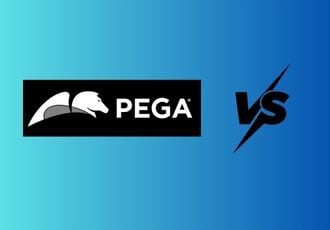What is the Insurance Underwriting Process?
Insurance underwriting is the process insurers use to assess the risk of insuring a person or asset. In simple terms, it helps decide whether to offer coverage, how much to charge, and under what terms.
For example, when someone applies for health insurance, the underwriter reviews their medical history, age, and lifestyle to determine their premium.
Without underwriting, insurers would take on unknown risks, possibly leading to higher costs for everyone—or denial of coverage after a claim. It’s a critical step that ensures fairness, accuracy, and long-term sustainability in the insurance industry.
How to Automate Insurance Underwriting Process?
Automating the insurance underwriting process can dramatically improve efficiency, accuracy, and customer satisfaction. Traditional underwriting often involves manual steps, lengthy reviews, and scattered data, leading to delays and potential errors. With FlowForma Copilot, insurers can streamline and modernize this process in just a few clicks. Whether you're working from a flowchart, a document, or even a spoken prompt, Copilot helps you structure, customize, and deploy your underwriting process effortlessly—turning complex workflows into seamless, automated experiences.
Here's how you can get started.
- With FlowForma Copilot, creating a structured insurance underwriting process is effortless. Provide a text prompt, upload a form or flow diagram, or use voice input to get started!
- FlowForma Copilot automatically structures your insurance underwriting process using steps, questions, and rules at lightning speed.
- Review your insurance underwriting process, and once satisfied, click “Build” to bring it to life.
- Open each section to review the questions and rules suggested by Copilot. Click here to define the conditions dynamically to fit your requirements.
- Once done defining, click "OK"
- Define the actions that should take place when they are met. Click “Save” to apply your logic.
- After customizing your insurance underwriting process with rules and automation, click “Save” to securely store all changes.
- Click “Test Form” to preview how your process functions in a real-world scenario.
- At the top, you'll see the entire insurance underwriting process is seamlessly structured in minutes with FlowForma Copilot! Thanks to smart rules and automation, your insurance underwriting process is now fully optimized and ready to deploy — effortlessly transforming the way you work!
Conclusion
In summary, the insurance underwriting process is essential for evaluating risk and determining fair coverage terms. Traditionally manual and time-consuming, this process can now be fully automated with tools like FlowForma Copilot. From defining underwriting steps to dynamically setting conditions and deploying your process, automation brings structure, speed, and precision to your workflows—answering the exact question of how to automate insurance underwriting effectively.
As your next step, consider reviewing your current underwriting procedures and identifying repetitive, decision-heavy areas that would benefit from automation. Keep in mind: the goal isn’t just speed, but consistency, compliance, and better decision-making. Make sure your rules are clear, logic is well-defined, and testing is thorough before rollout.
With FlowForma Copilot, transforming your underwriting process doesn’t require code or complexity. Experience faster deployment, smarter workflows, and better outcomes—get started today
.png) By
By 




